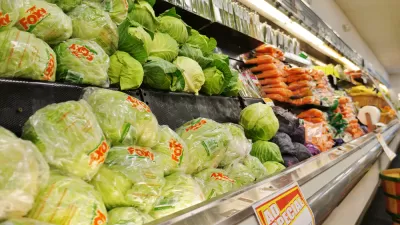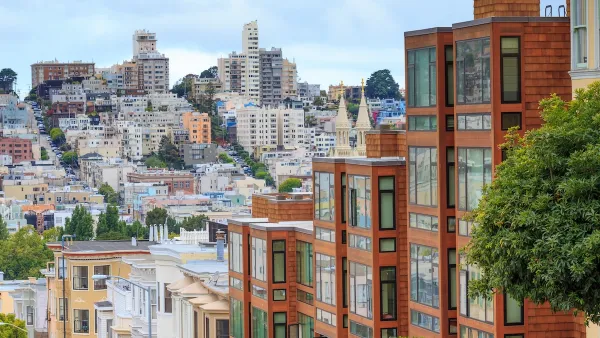Being able to get groceries without a car can be a big draw in walkable, mixed use neighborhoods. Many Boston grocers and developers are taking that to heart.

For The Boston Globe, Tim Logan reports on a proliferation of ground-level grocery stores in the city's mixed-use neighborhoods. "From the South End to Waltham, builders looking to fill their ground floors with businesses that double as amenities are teaming up with grocers who want easy access to an upscale clientele. The result: A new hybrid, something between the corner grocers of old Boston and the vast supermarkets of suburbia."
Grocery shoppers don't want a long walk, meaning a certain level of residential density must be in place. "For grocery stores, having residents upstairs provides a built-in customer base, and typically one apartment building leads to another, putting more customers within walking distance. They can anchor not just a building, but a neighborhood."
Some developers see ground-level grocery shopping as another amenity to offer prospective residents, and an essential one at that. Still, concerns remain. For instance, "the logistics of loading and unloading groceries in the early morning can be complicated when a few hundred people are sleeping upstairs." And parking is still an issue for those shoppers who do drive in.
FULL STORY: Builders offer a new perk: a very short walk to the grocery store

Maui's Vacation Rental Debate Turns Ugly
Verbal attacks, misinformation campaigns and fistfights plague a high-stakes debate to convert thousands of vacation rentals into long-term housing.

Planetizen Federal Action Tracker
A weekly monitor of how Trump’s orders and actions are impacting planners and planning in America.

In Urban Planning, AI Prompting Could be the New Design Thinking
Creativity has long been key to great urban design. What if we see AI as our new creative partner?

King County Supportive Housing Program Offers Hope for Unhoused Residents
The county is taking a ‘Housing First’ approach that prioritizes getting people into housing, then offering wraparound supportive services.

Researchers Use AI to Get Clearer Picture of US Housing
Analysts are using artificial intelligence to supercharge their research by allowing them to comb through data faster. Though these AI tools can be error prone, they save time and housing researchers are optimistic about the future.

Making Shared Micromobility More Inclusive
Cities and shared mobility system operators can do more to include people with disabilities in planning and operations, per a new report.
Urban Design for Planners 1: Software Tools
This six-course series explores essential urban design concepts using open source software and equips planners with the tools they need to participate fully in the urban design process.
Planning for Universal Design
Learn the tools for implementing Universal Design in planning regulations.
planning NEXT
Appalachian Highlands Housing Partners
Mpact (founded as Rail~Volution)
City of Camden Redevelopment Agency
City of Astoria
City of Portland
City of Laramie




























